MACHIKO KIMONO Japanese Kimonos, Vintage & Upcycled
Tsumugi HAORI and KIMONO Skirt, Camisole upcycled from Japanese kimono"sarasa blue"
Tsumugi HAORI and KIMONO Skirt, Camisole upcycled from Japanese kimono"sarasa blue"
Couldn't load pickup availability
Genuine vintage Japanese kimono (Tsumugi HAORI) and KIMONO Skirt upcycled from Japanese kimono.
One-of-a-kind-vintage and upcycle products.
This haori was originally intended for women.
*Dating is contemporary.
[Material] Silk
[Care] Dry clean.
The name of this kimono fabric pattern is 更紗 Sarasa. Kimono patterns designed under the influence of cloth patterns imported to Japan from India, Java, and Persia from the Muromachi period to the early Edo period are called Sarasa patterns.
1. Genuine vintage Japanese kimono (HAORI) :
I carefully handpicked this piece, which is in very good condition for a vintage garment.
Handsewn by Japanese craftsmen
[Size] Free size can be worn anywhere from a UK6 - UK16 *see kimono sizing illustration* Length (body length): approx. — cm / 34.6 inches, Length from back of neck to end of sleeve: — cm / 25.5 inches (My height: 167cm / approx. 5 ft. 6 in)
* Please understand that there may be stains and slight damage common in vintage fabrics.
2. KIMONO Skirt upcycled from Japanese kimono:
I carefully handpicked this kimono piece, which is in very good condition for a vintage garment. I and the sewing team upcycled this kimono piece.
*Please understand that there may be stains and slight damage common in vintage fabrics as all of our clothes are made by either partial or full disassembly of the original kimono.
[Size] ONE size *Please see sizing illustration
*This items will be sent for professional kimono cleaning after purchase. Please allow about 7-10 business day from order to shipment.
Kimonos can be broadly divided into two fabrics types.
They are "yarn-dyed kimonos" = "ORI" and "post-dyed kimonos" = "SOME".
Yarn-dyed fabrics”ORI” are fabrics that are dyed and woven while the threads are still in the yarn.
Typical examples are "tsumugi", “omeshi”, and "cotton kasuri".
Tsumugi is especially popular among modern Japanese people, and many fabrics have simple designs.
Post-dyed kimonos”SOME” refers to kimono woven with white threads without dyeing, to which "komon dyeing," "Bingata dyeing," "Yuzen dyeing," and other processes are applied.
I feel that the kimono that people overseas imagine is like a “SOME” kimono.
This haori is a fabric called "紬 Tsumugi"
*Original formal rules of kimono wear kimono with the right side under the left.
[Packing]Special Machiko Kimono's Kimono Box. One free haori-himo.
SHIPPING & RETURNS, DETAILS
SHIPPING & RETURNS, DETAILS
WE SHIPPING WORLDWIDE
Shipping to US, UK, France, Italy, Canada, Australia, Finland and Mexico is no issue! We have shipped to happy customers in many countries. If your country isn’t listed yet please reach out and we can inquire with our shipping company.
FROM TIME OF ORDER UNTIL SHIP DATE
Almost all items will be sent for professional kimono cleaner after purchase. Please allow up to 10 business days from date of order until shipment.
*International delivery times can vary due to customs.
REGARDING VAT/ IMPORTING TAX
Thank you for your understanding that any customs charges and tax upon delivery which the customer is responsible.
*The prices shown in my website do not include such items as VAT, import duty, tax and other unpredictable charges against middleman. In case of these unexpected charge needed in the due course, these charges should be paid by the customers. For more information regarding your country’s customs policies, please contact your local customs office or its agents.
Thank you for your understanding.
*Thank you for your understanding that the buyer has responsible for local laws and regulations.
ALL ITEM, NO RETURN or NO REFUND. (ALL SALES ARE FINAL)
Please check the measurements and conditions before purchasing.
SHIPPING METHOD
Shipping will be via Japan Post EMS and Small Packet.
PLEASE FEEL FREE TO CONTACT ME BY DM✉︎ OR my Instagram DM !
The Buyer understands and agrees that any purchase from the Site is a personal purchase from the Seller, which is a private activity.
REGARDING VAT/ IMPORTING TAX
REGARDING VAT/ IMPORTING TAX
Thank you for your understanding that any customs charges and tax upon delivery which the customer is responsible.
*The prices shown in my website do not include such items as VAT, import duty, tax and other unpredictable charges against middleman. In case of these unexpected charge needed in the due course, these charges should be paid by the customers. For more information regarding your country’s customs policies, please contact your local customs office or its agents.
Thank you for your understanding.
*Thank you for your understanding that the buyer has responsible for local laws and regulations.
ON THE TOPIC OF MATERIAL COMPOSITION
ON THE TOPIC OF MATERIAL COMPOSITION
Antique and vintage Kimono and Haori do not have material composition labels. Material composition labels were a development that came with mass market clothing and as such when kimono are newly tailored, the final product is made to the original client's specification. Today however, ready-made products including kimono and yukata are also sold at major retail stores.
When you tailor your kimono in traditional way, you select a kimono fabric and tailor to your size.
Composition of the fabric is ONLY indicated on the fabric. Composition of fabric information was not traditionally provided in tailored kimono and even today kimono tailors do not generally include it in the garment.
In addition, most kimonos are tailored by hand. Kimonos are tailored by a special sewing professional called a "wasai-shi" (Japanese tailor or seamstress).
I am active as a licensed antique art dealer. And I am a kimono geek. Compositional judgments of vintage kimonos are not 100% accurate unless they are submitted to an inspection agency that can perform tests on the fabrics to determine their composition. I myself have a career as an upcycling artist. I have experimented with washing kimonos at home, and with burning fabrics and threads to determine their combustion reactions. If I am confident that the item is made of silk based on the assumed age of production and judgment of the fabric quality, I label it as 100% silk.
However, there are some very rare cases in which silk is used for the warp and synthetic fiber for the weft. This is not only the case with modern products, but also occasionally with older products in which synthetic fibers were first made available. There are also some modern products that are made of synthetic fibers that do not differ from very elaborate silk. For those that I have concerns about, I burn the threads and other materials to make a judgment, but without sophisticated test equipment, it is difficult to make an 100% accurate assessment judgment. For those that I am unsure about, I use the notation "silk & more". I take care in making these judgments based largely on my own experience, but cannot guarantee the accuracy beyond all doubt.
If you have a deep desire to determine the material composition I would recommend seeking out the services of a fabric testing lab near you.
Thank you for your understanding.
Share
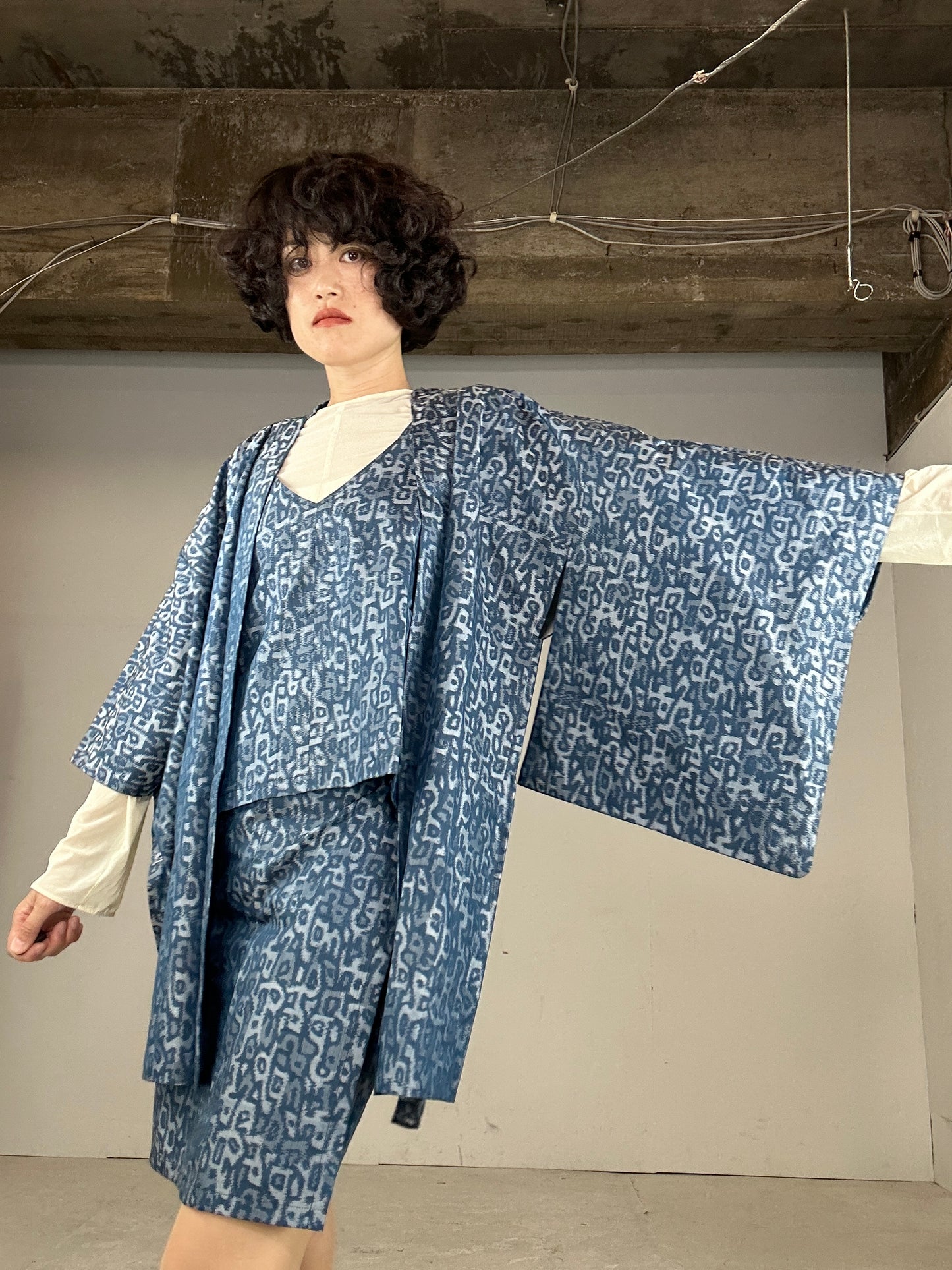

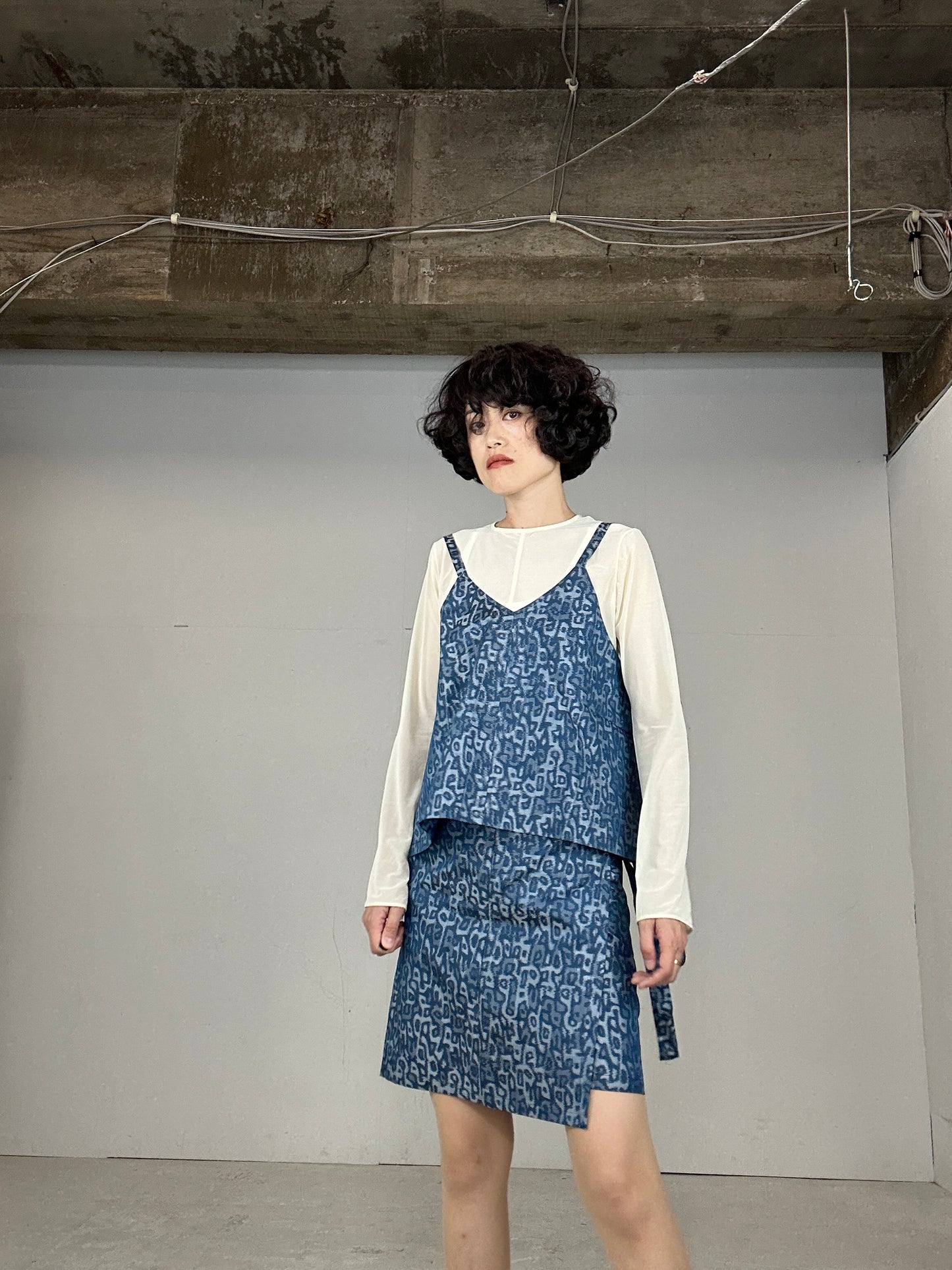
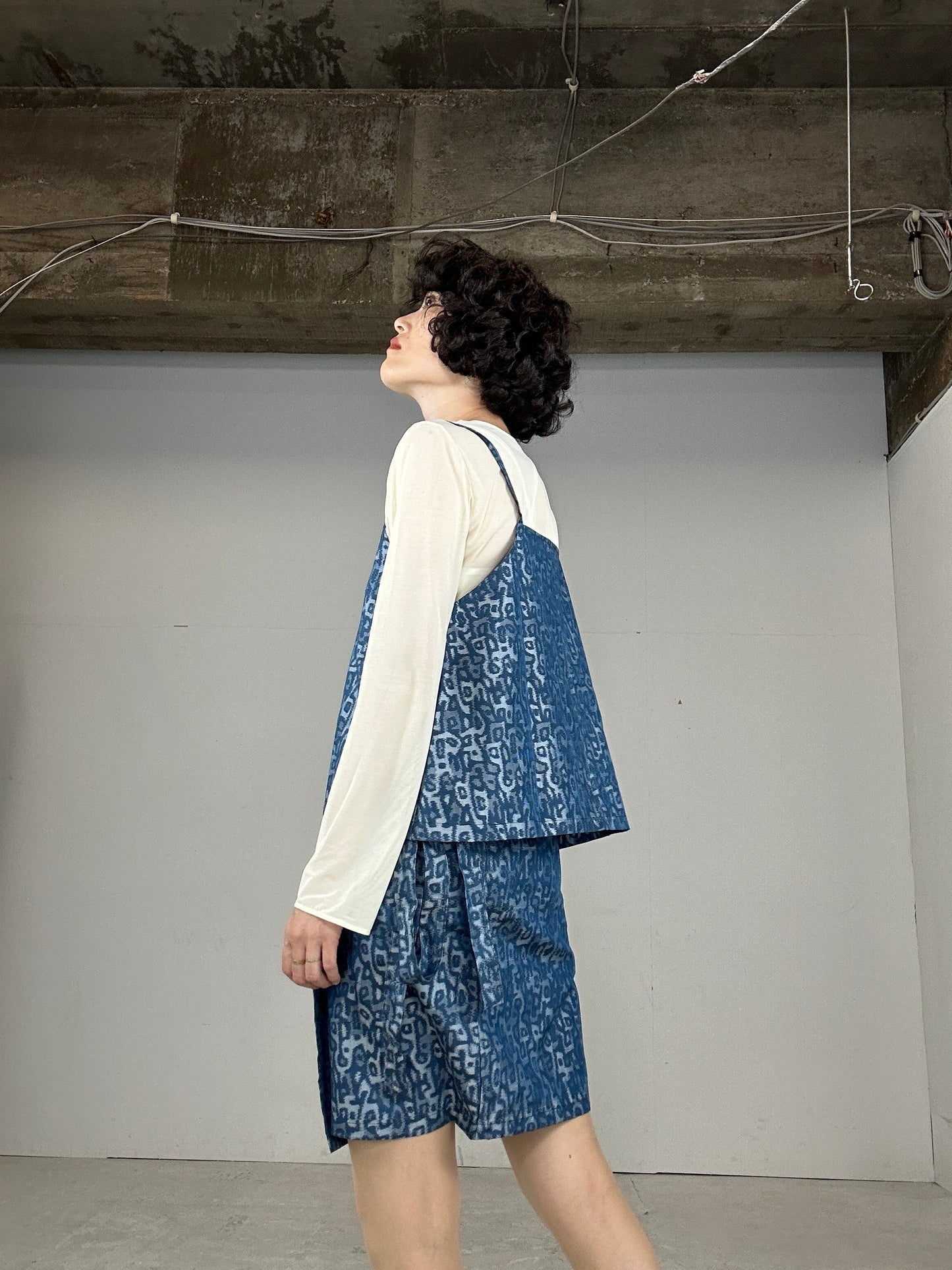
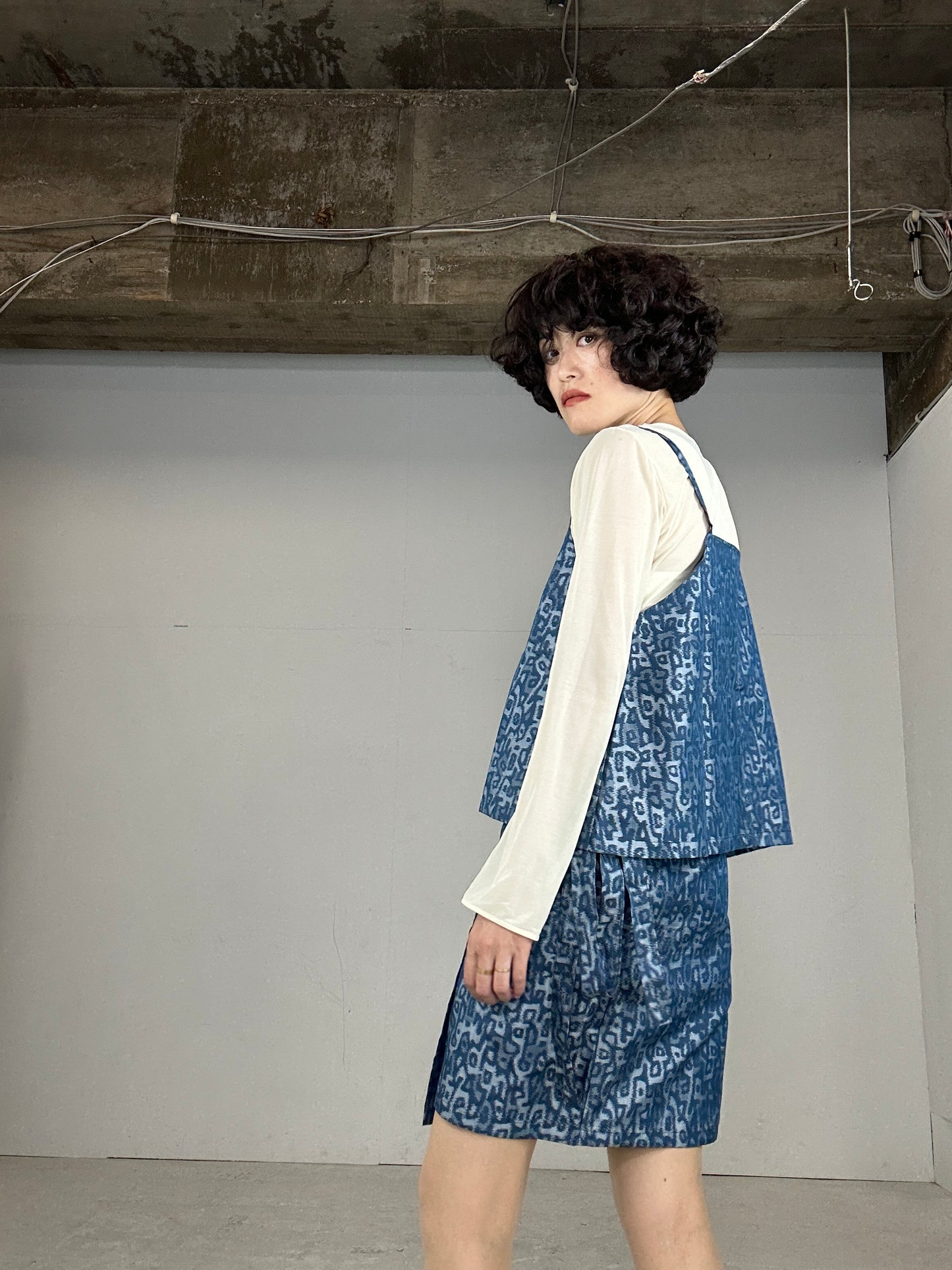

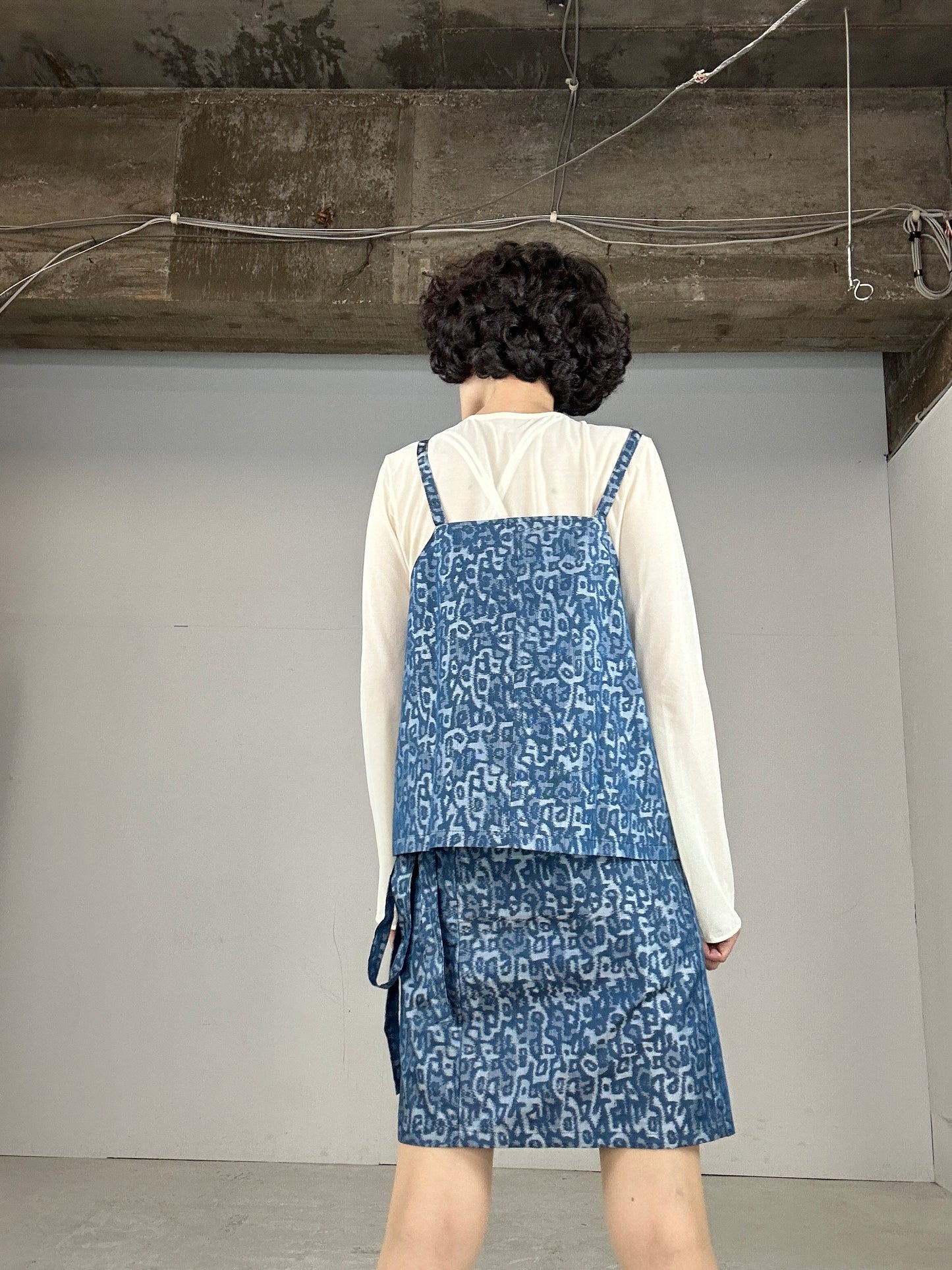
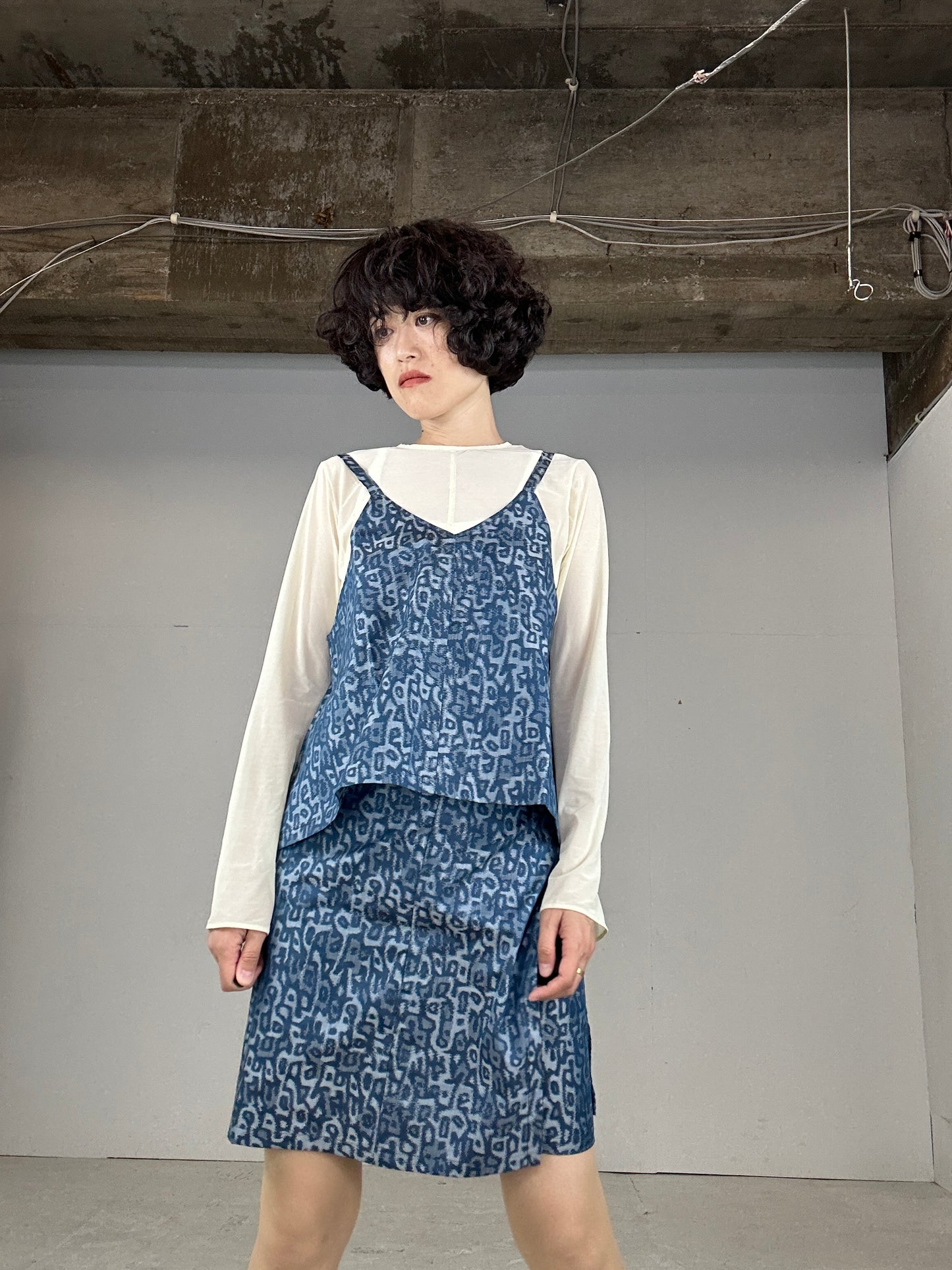
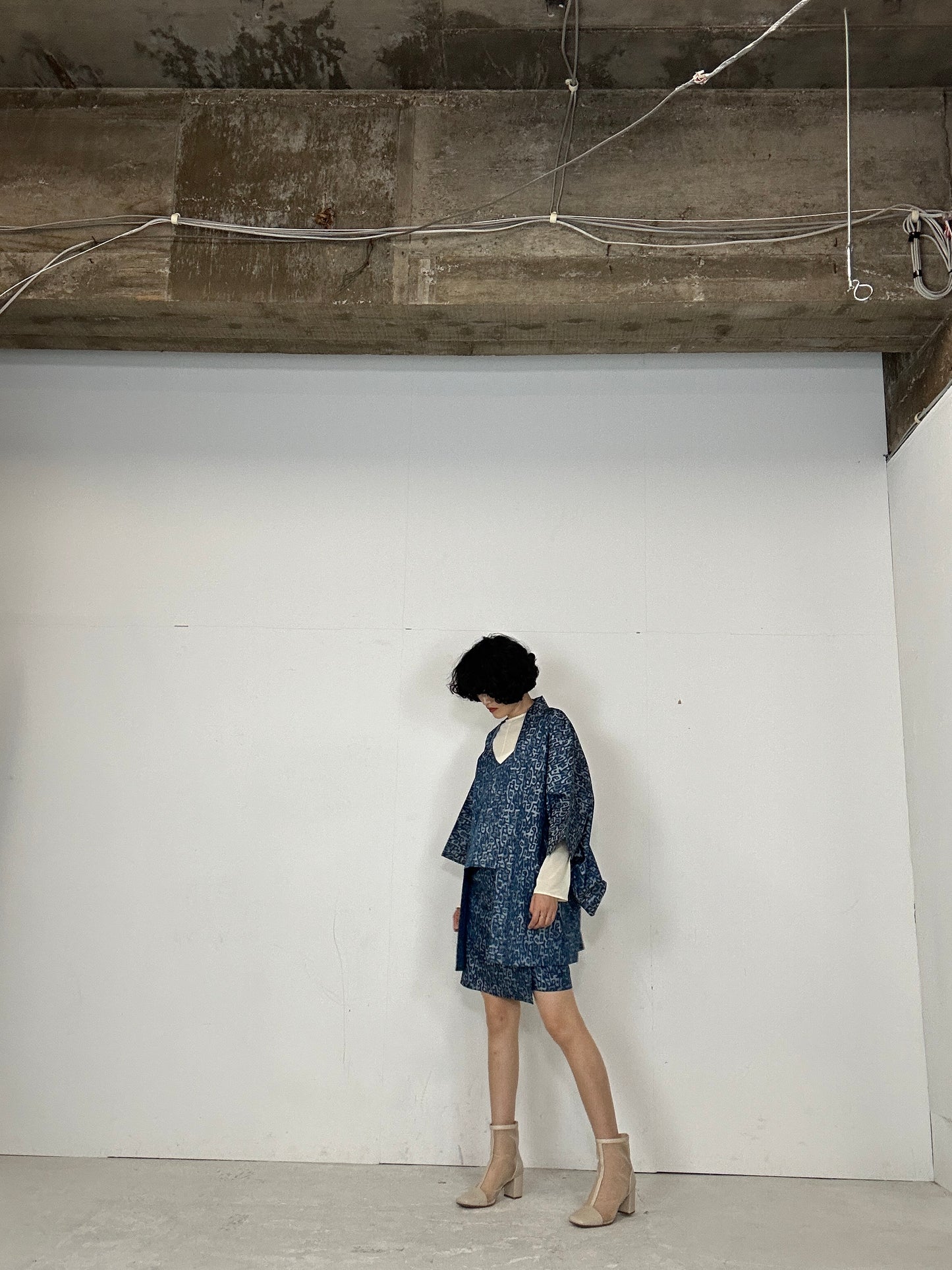
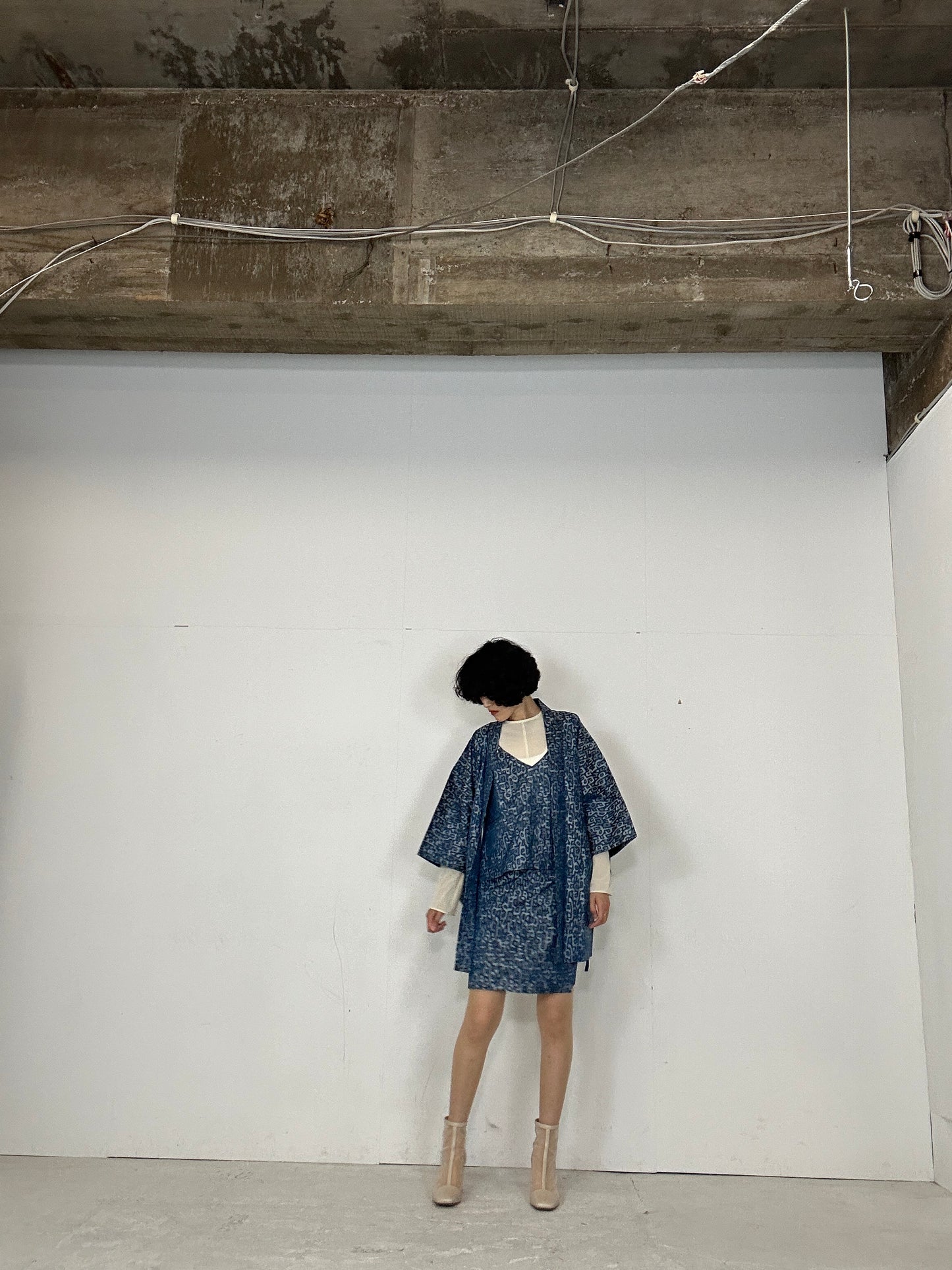
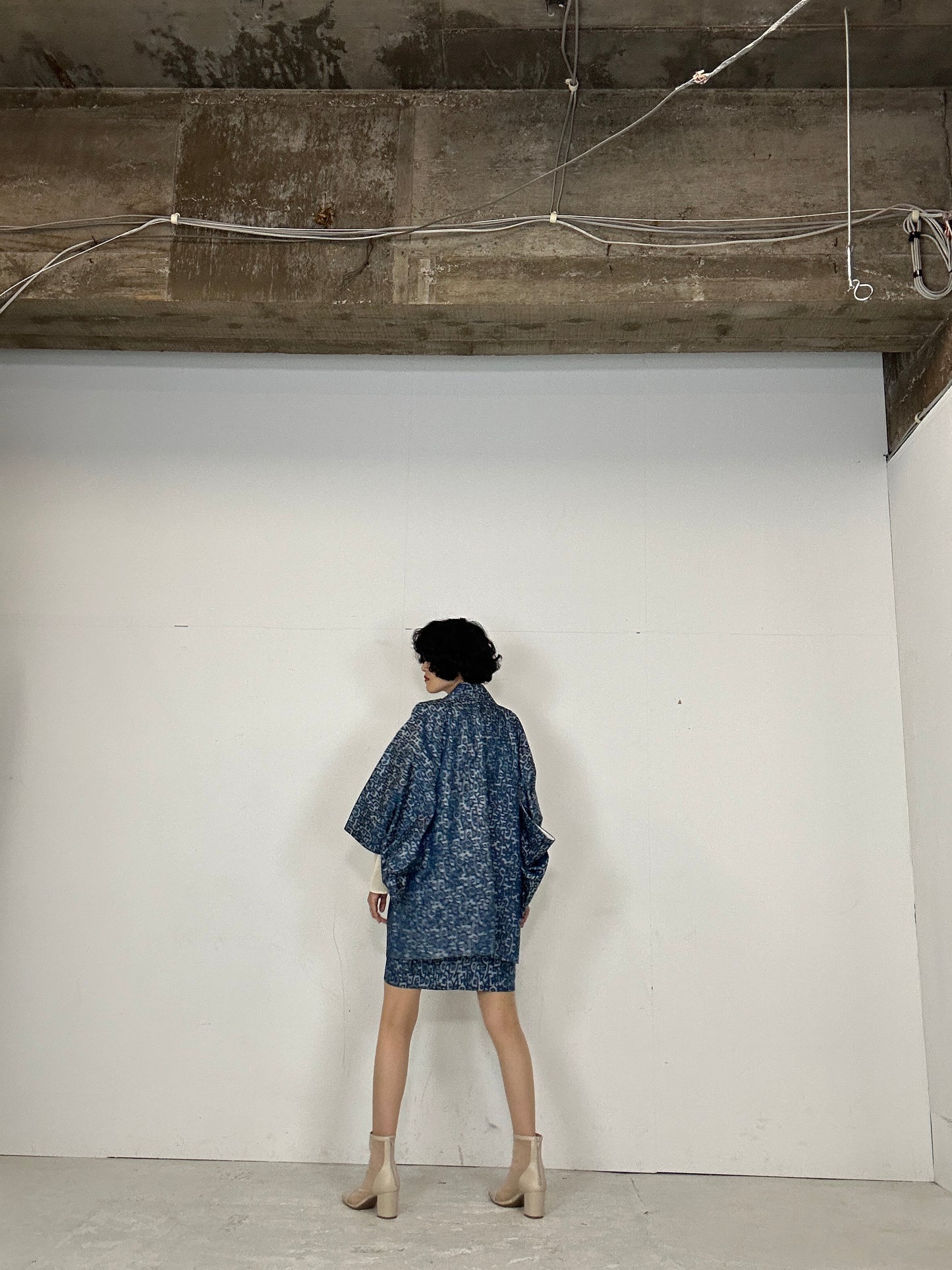

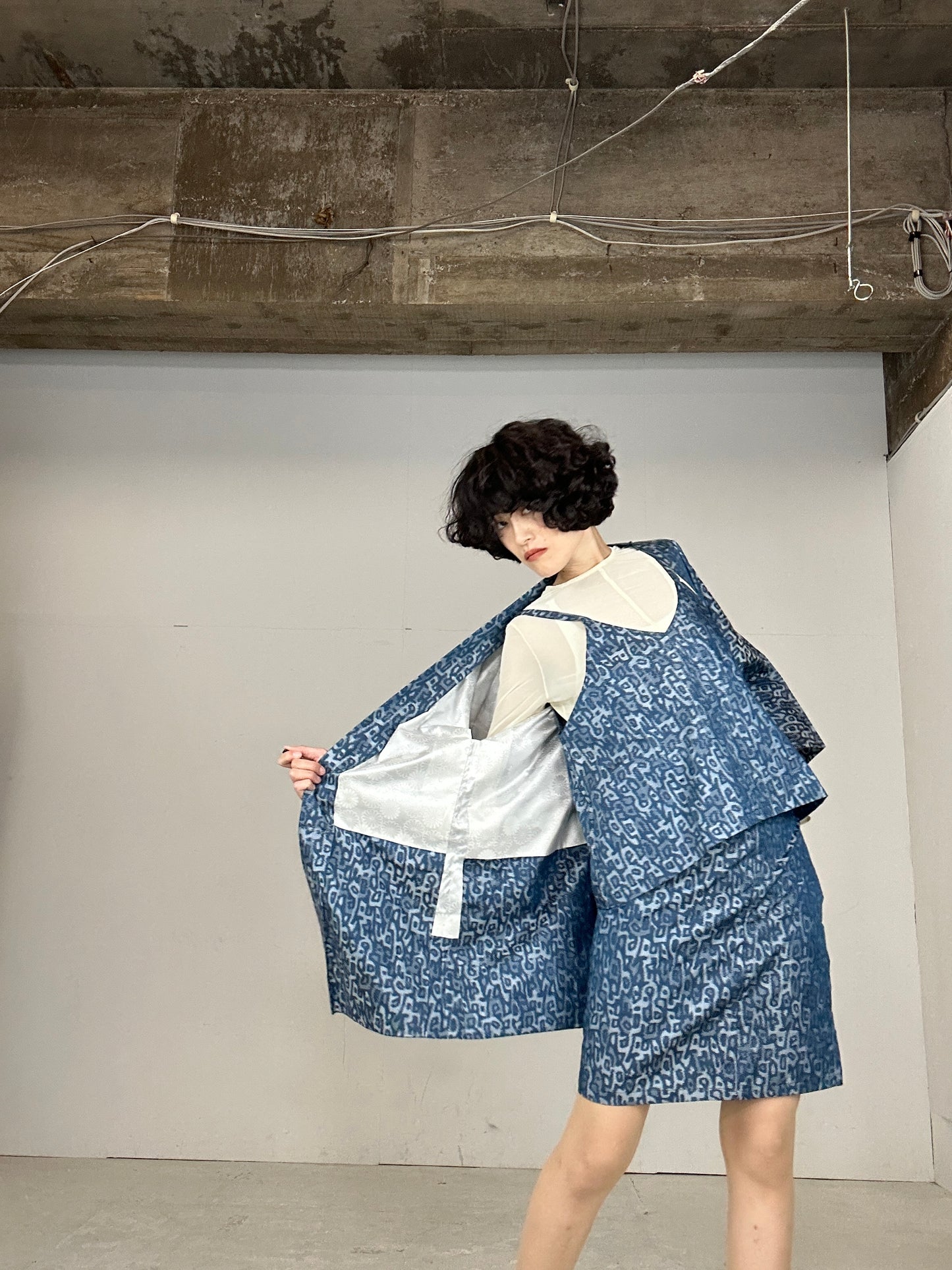
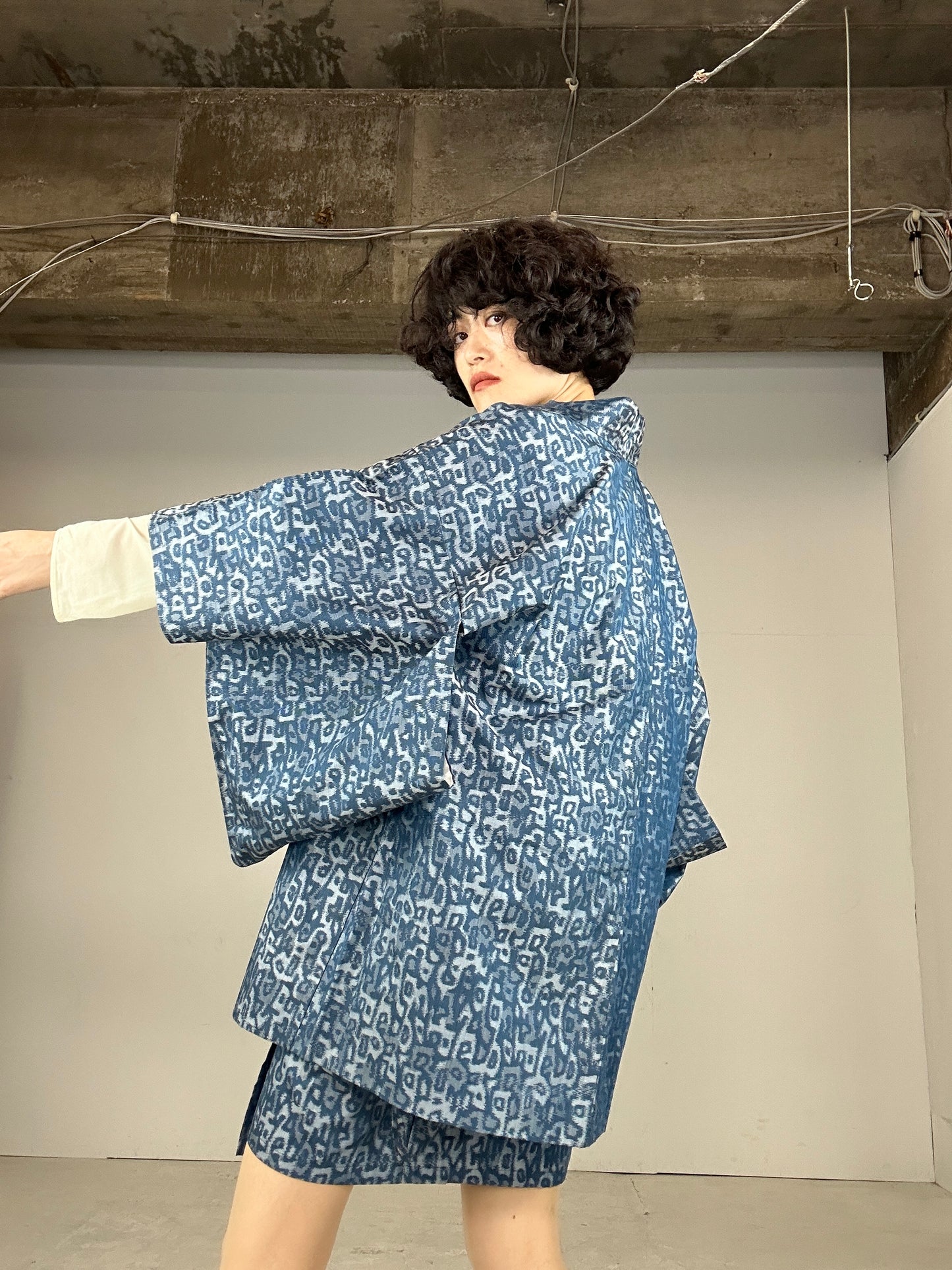

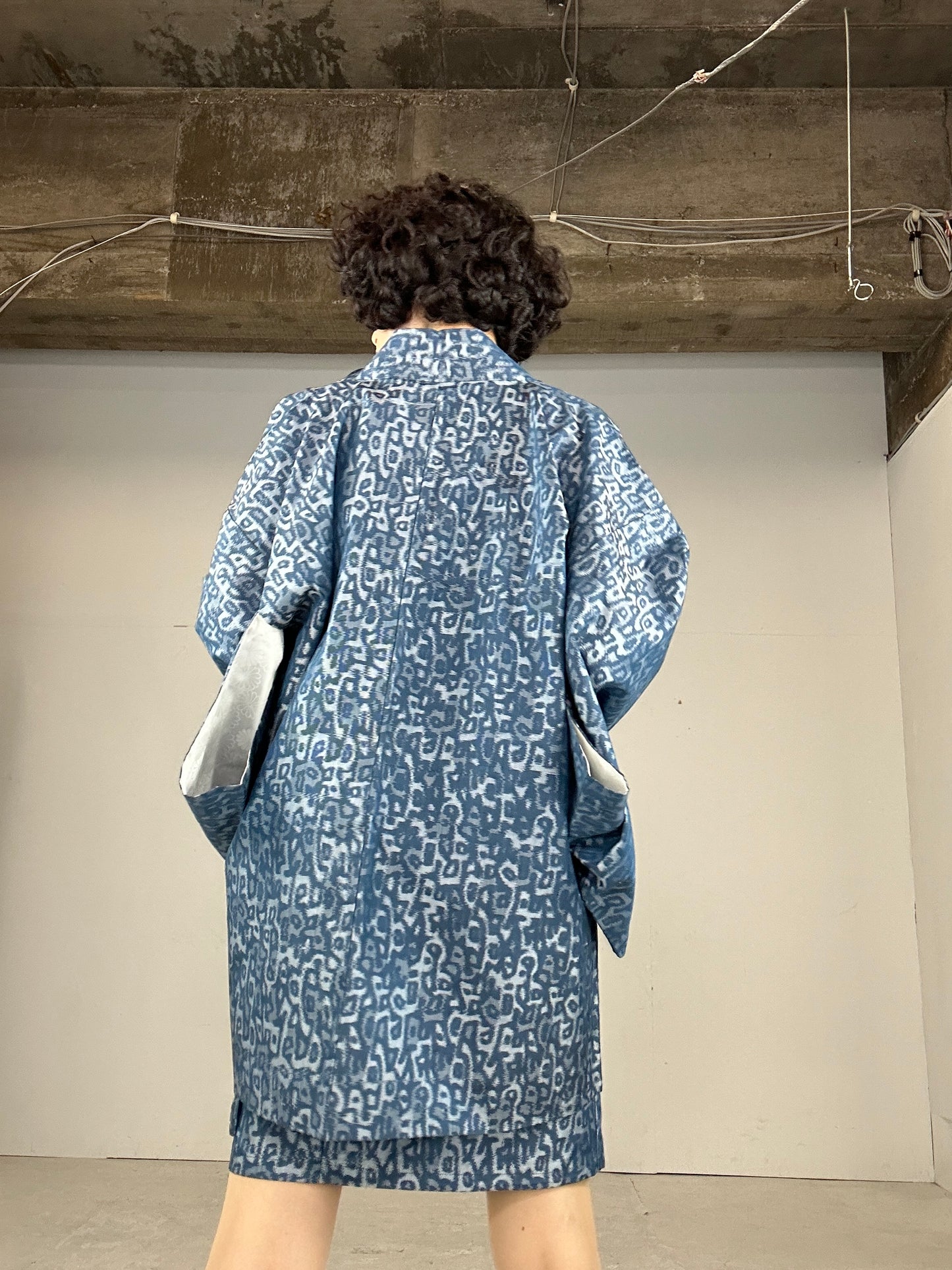
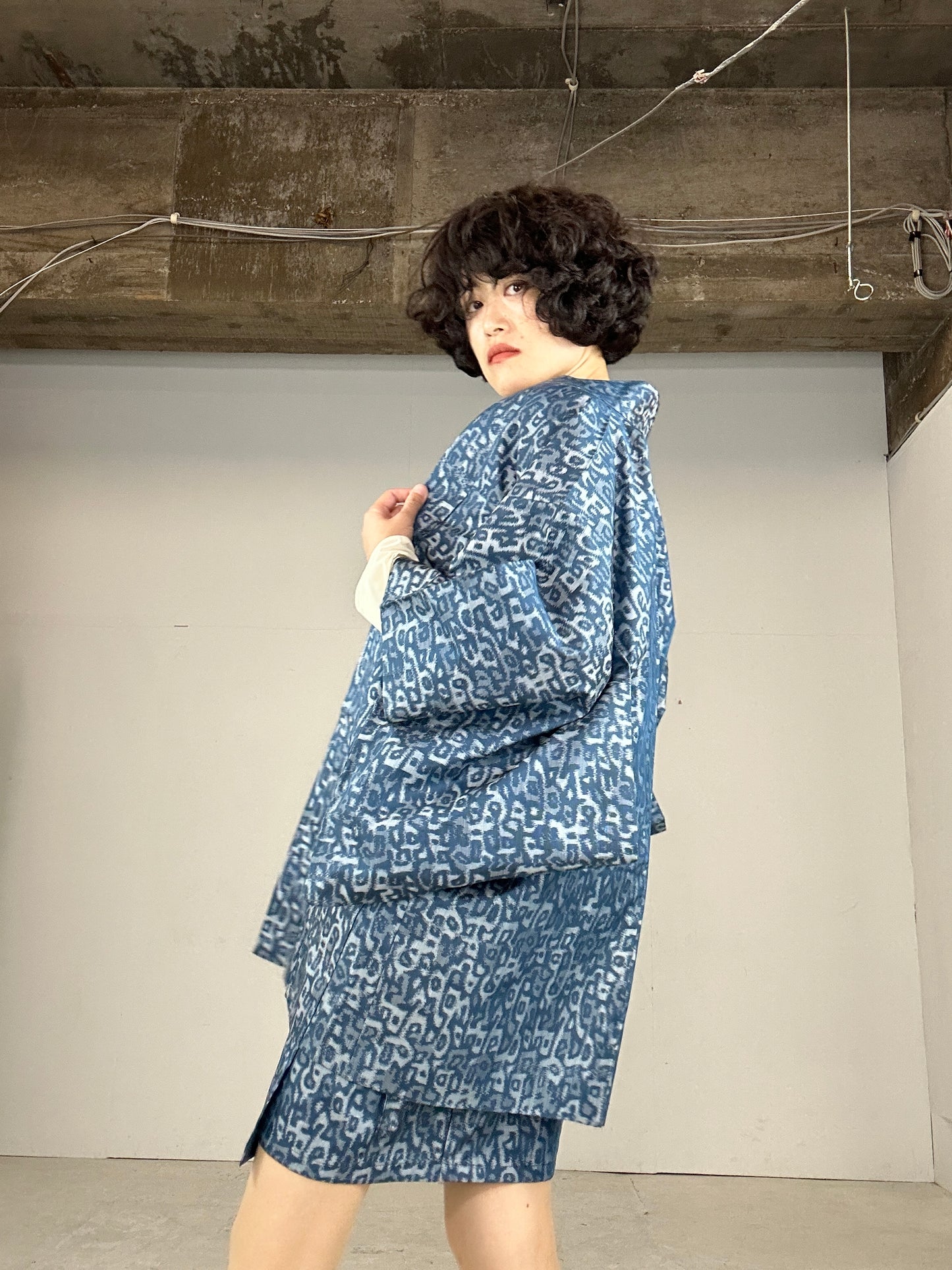
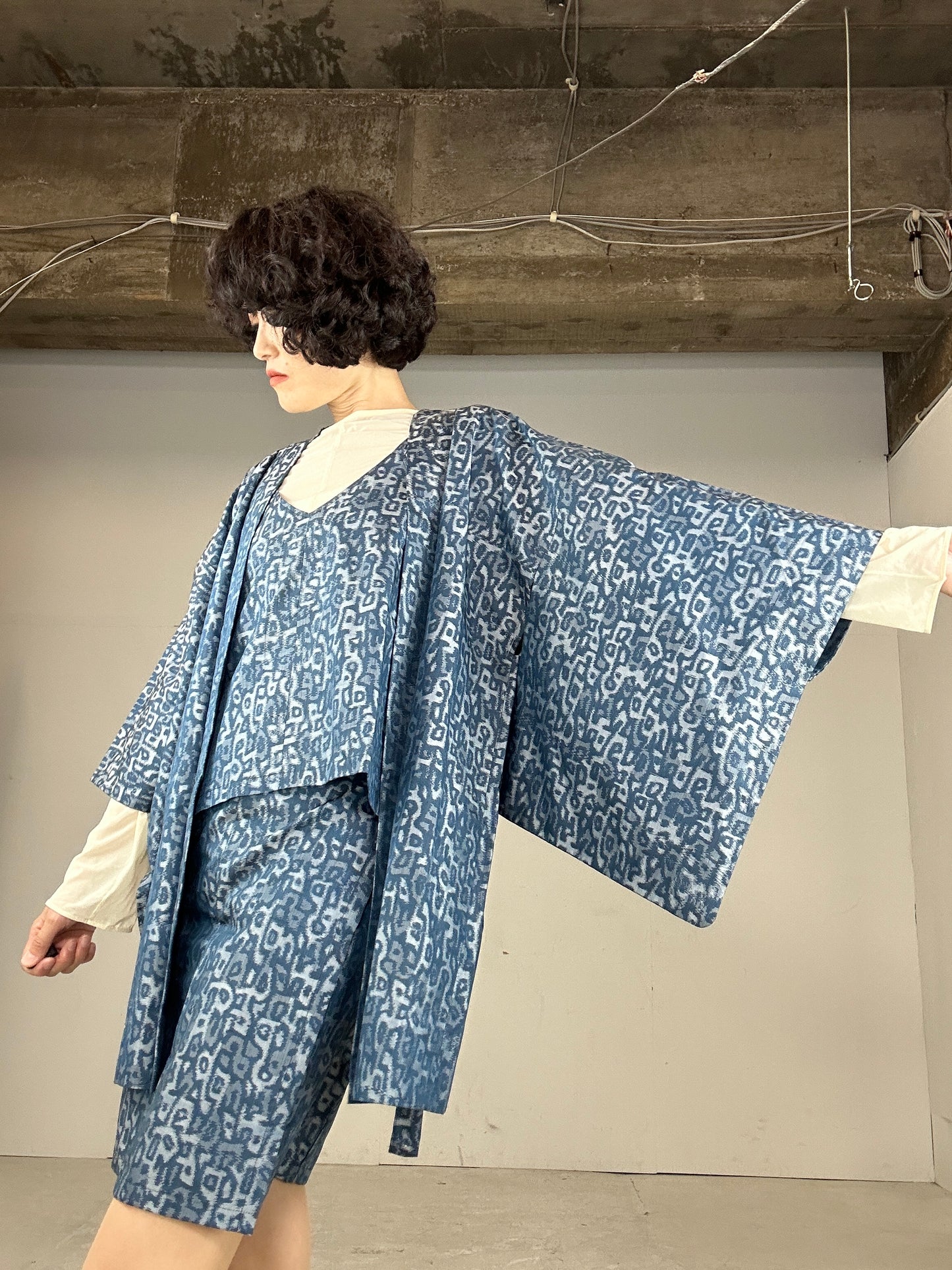
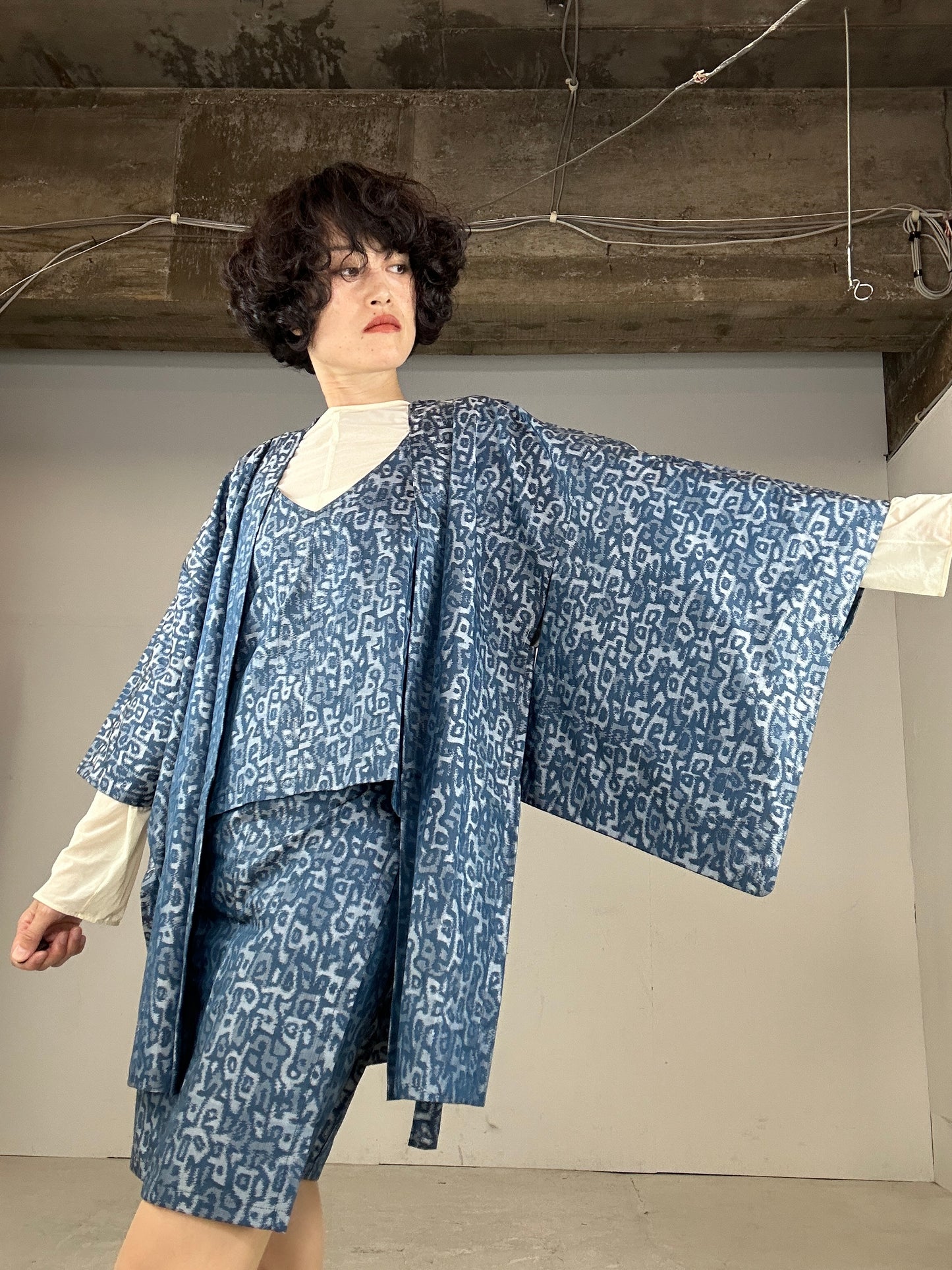
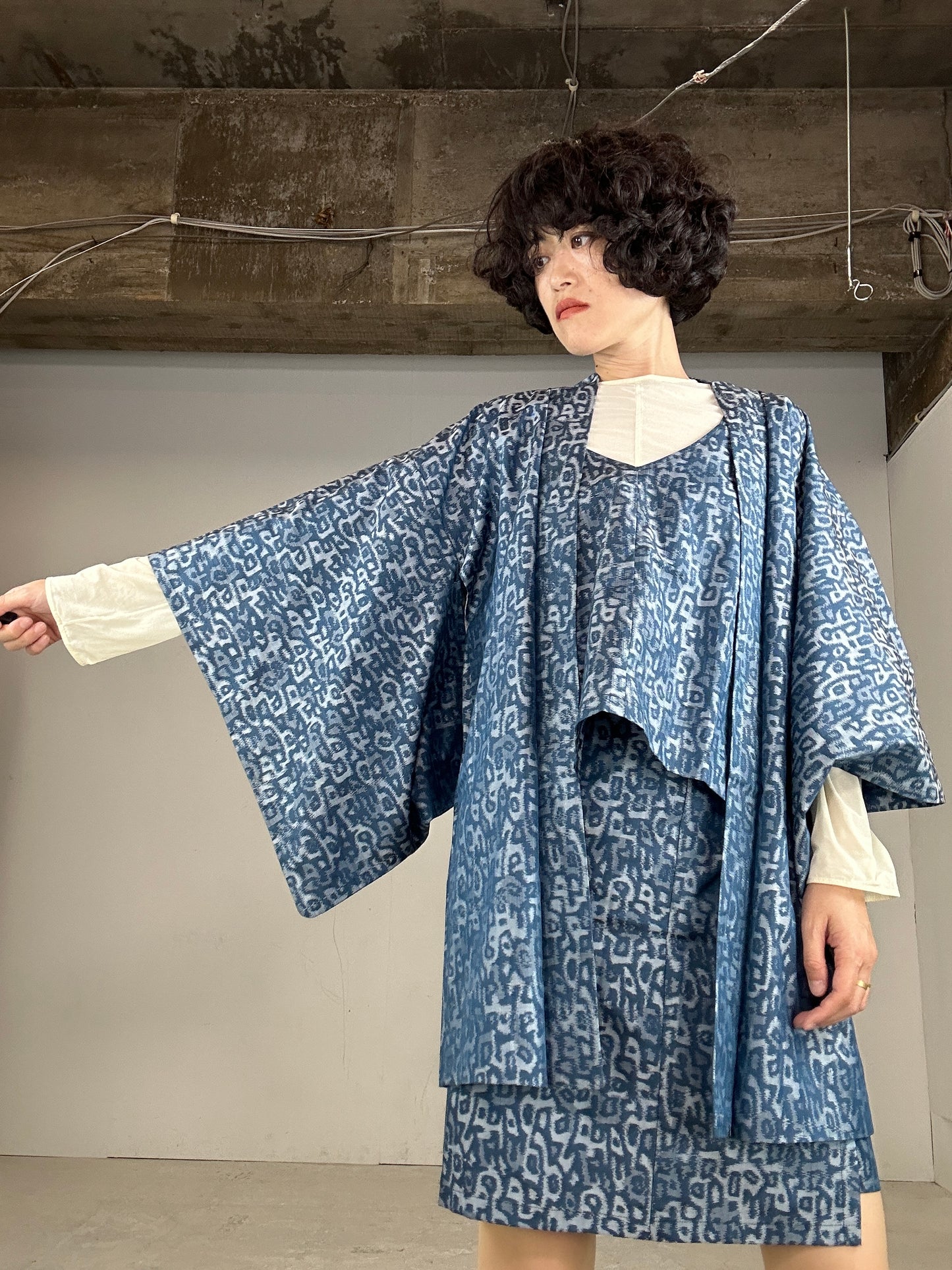
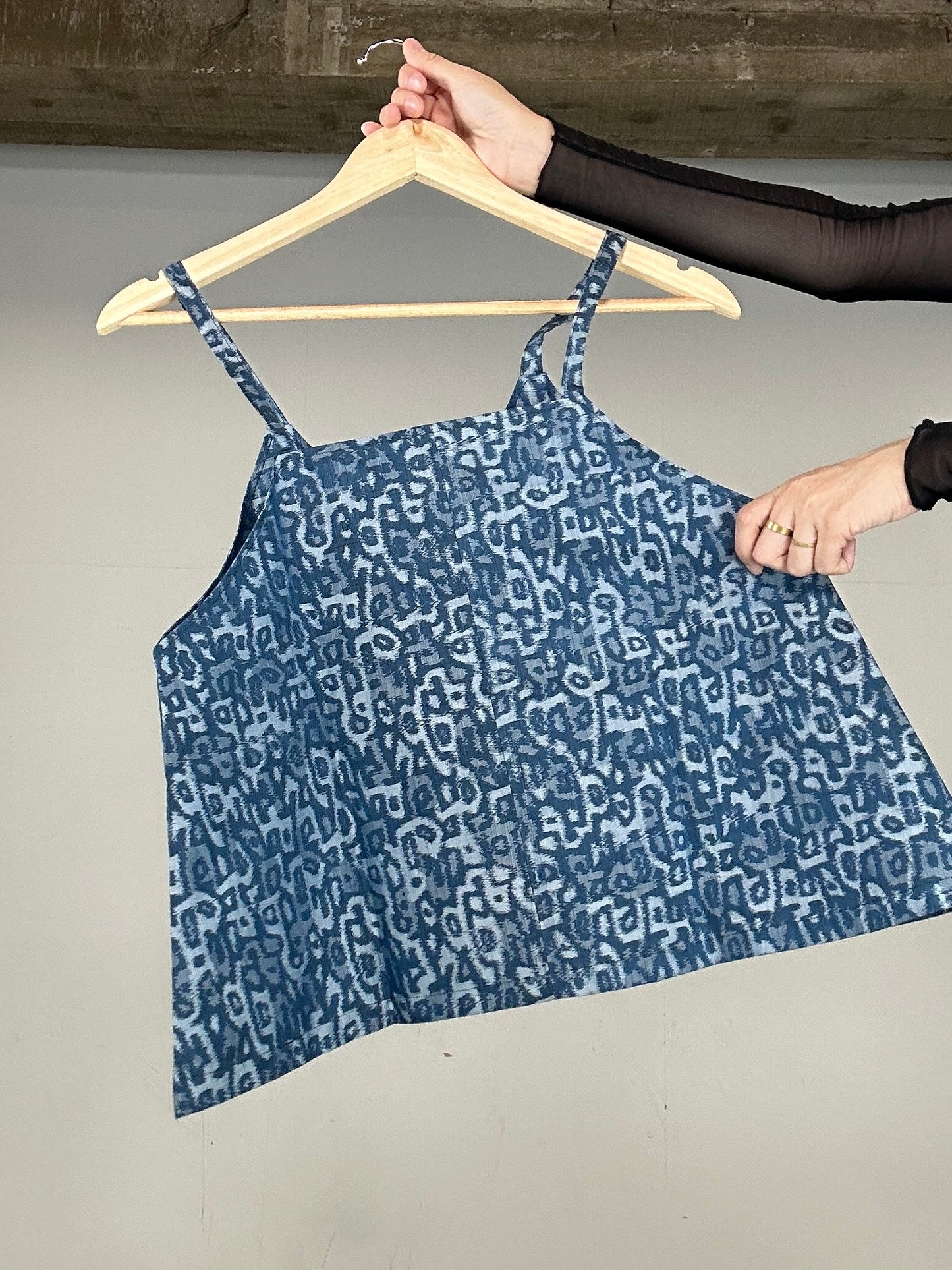
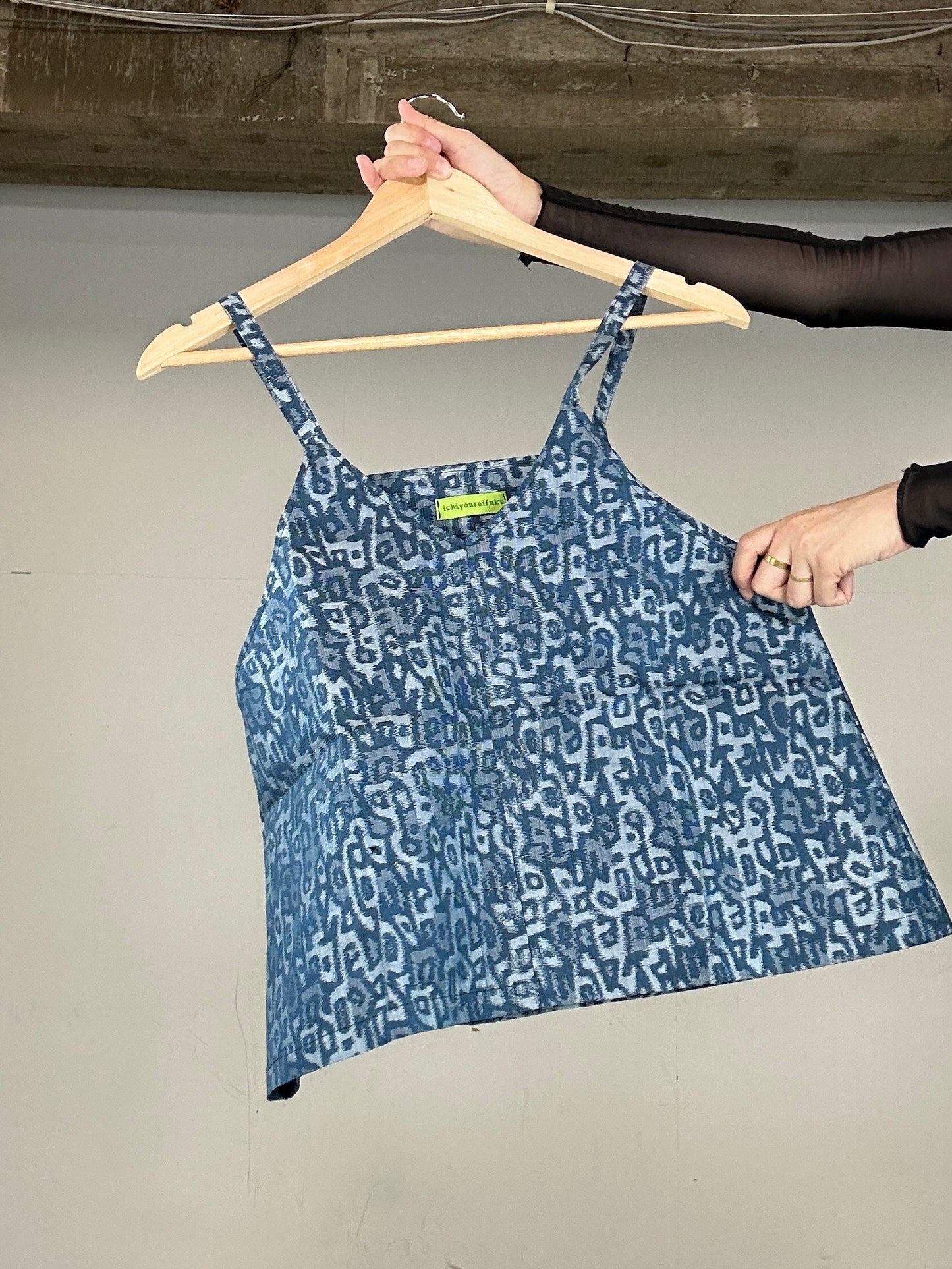
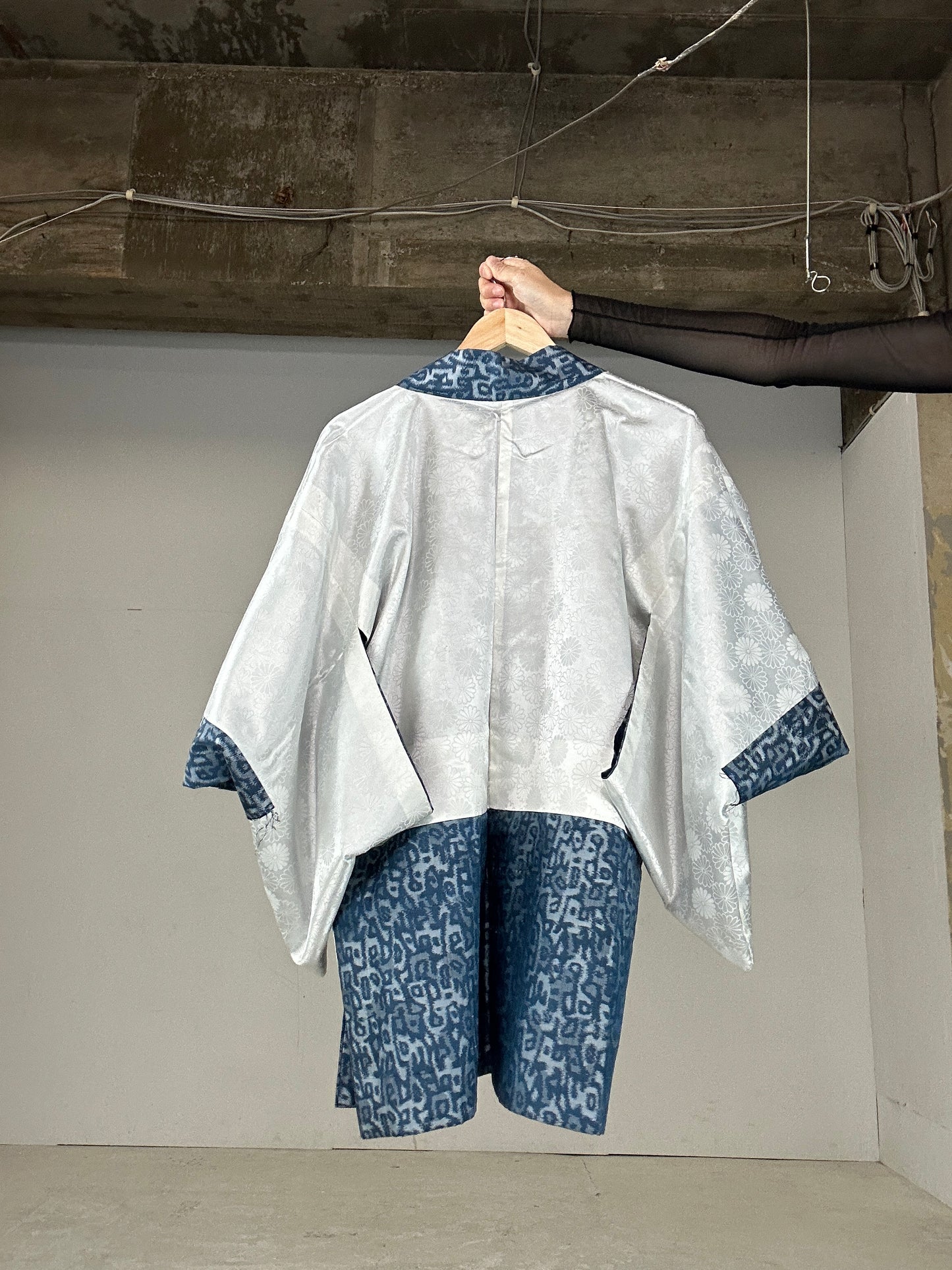
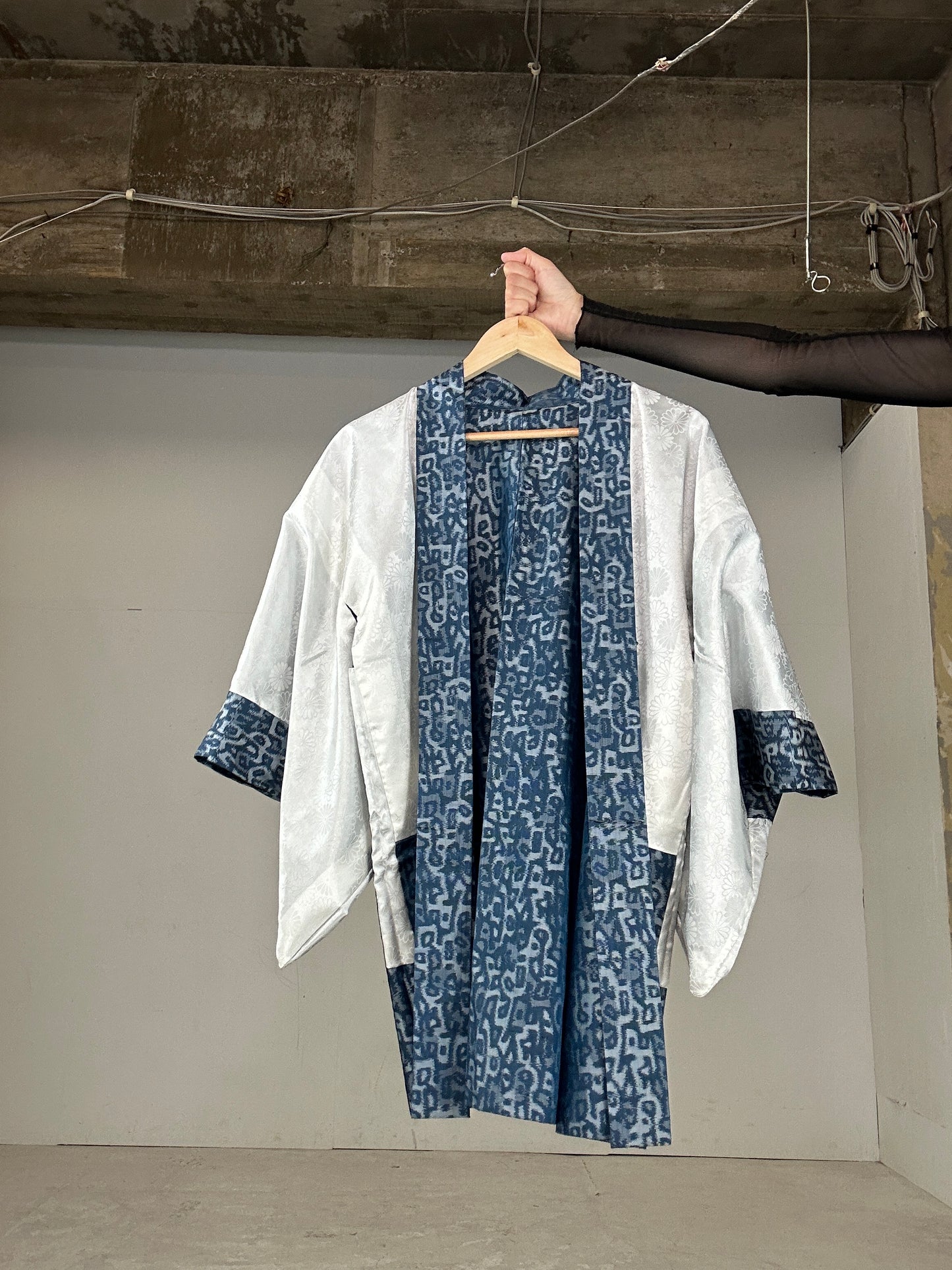
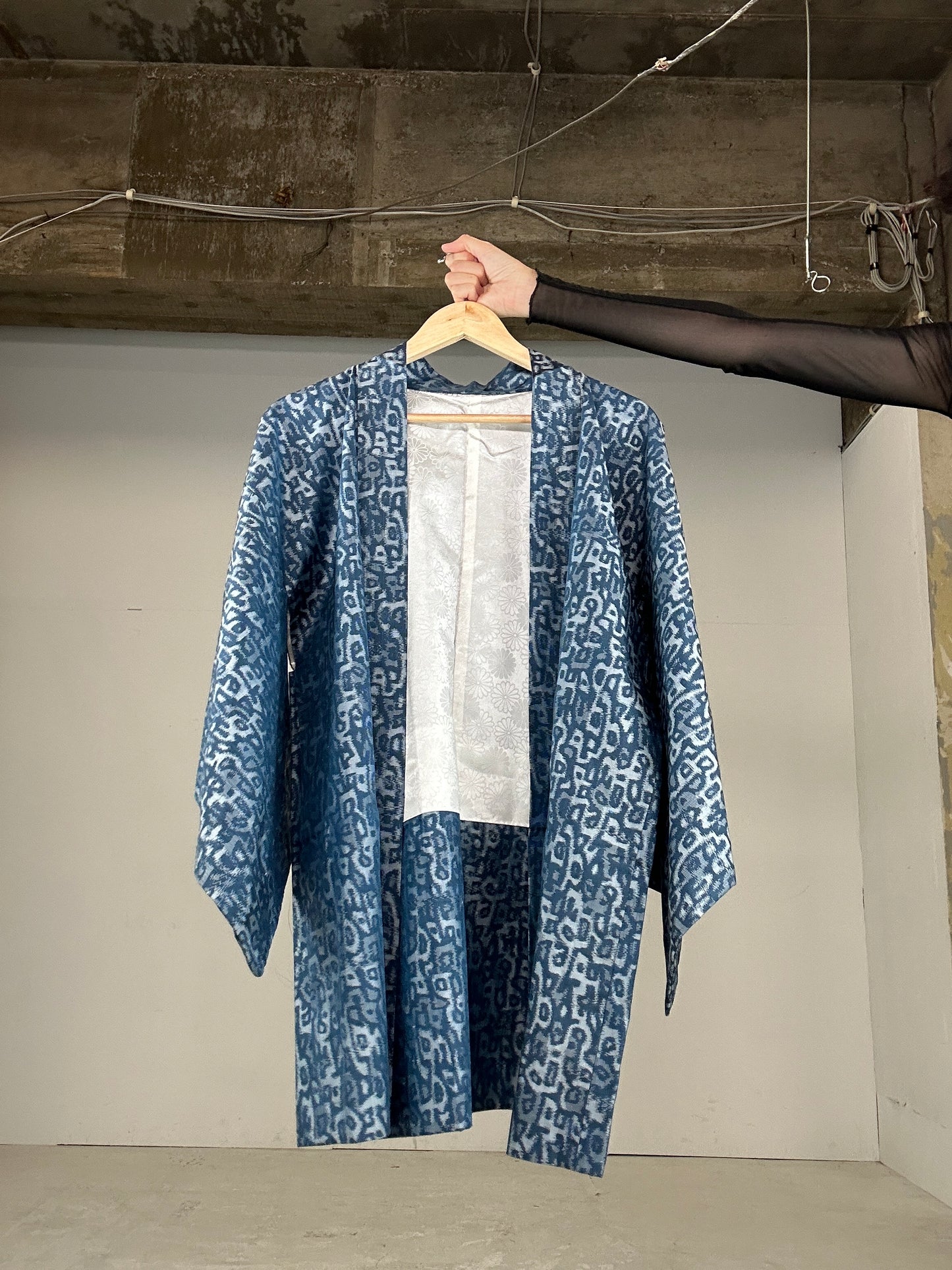
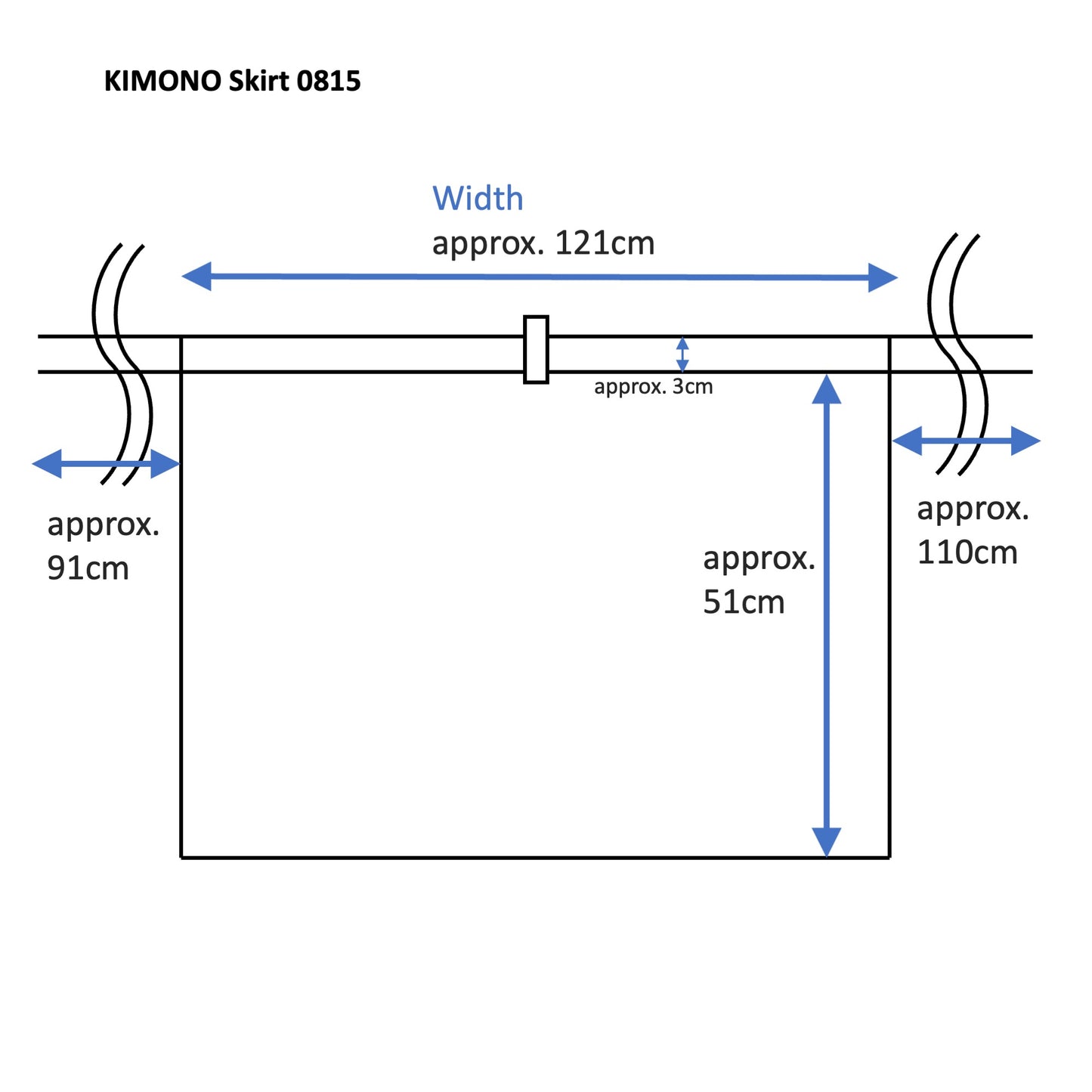
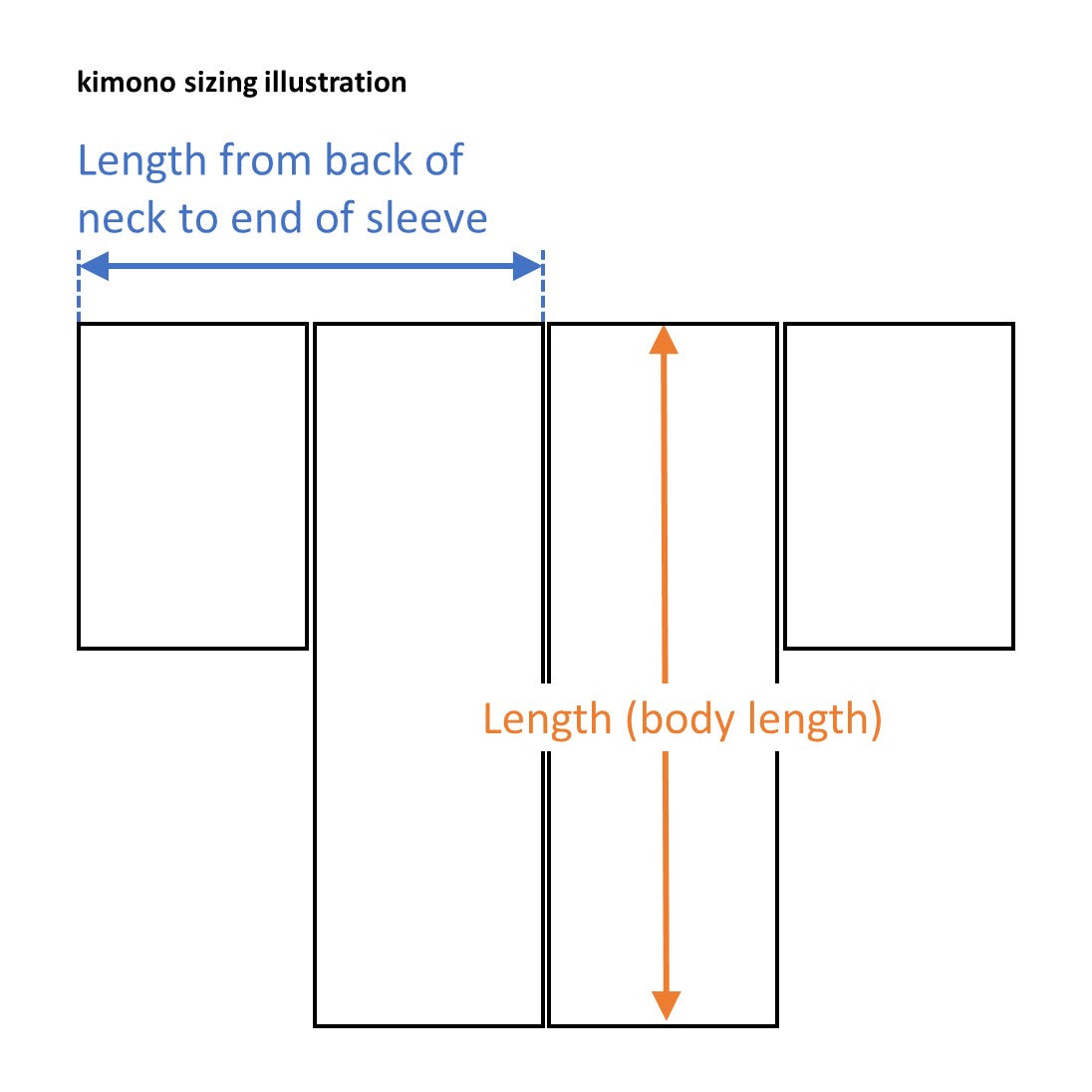
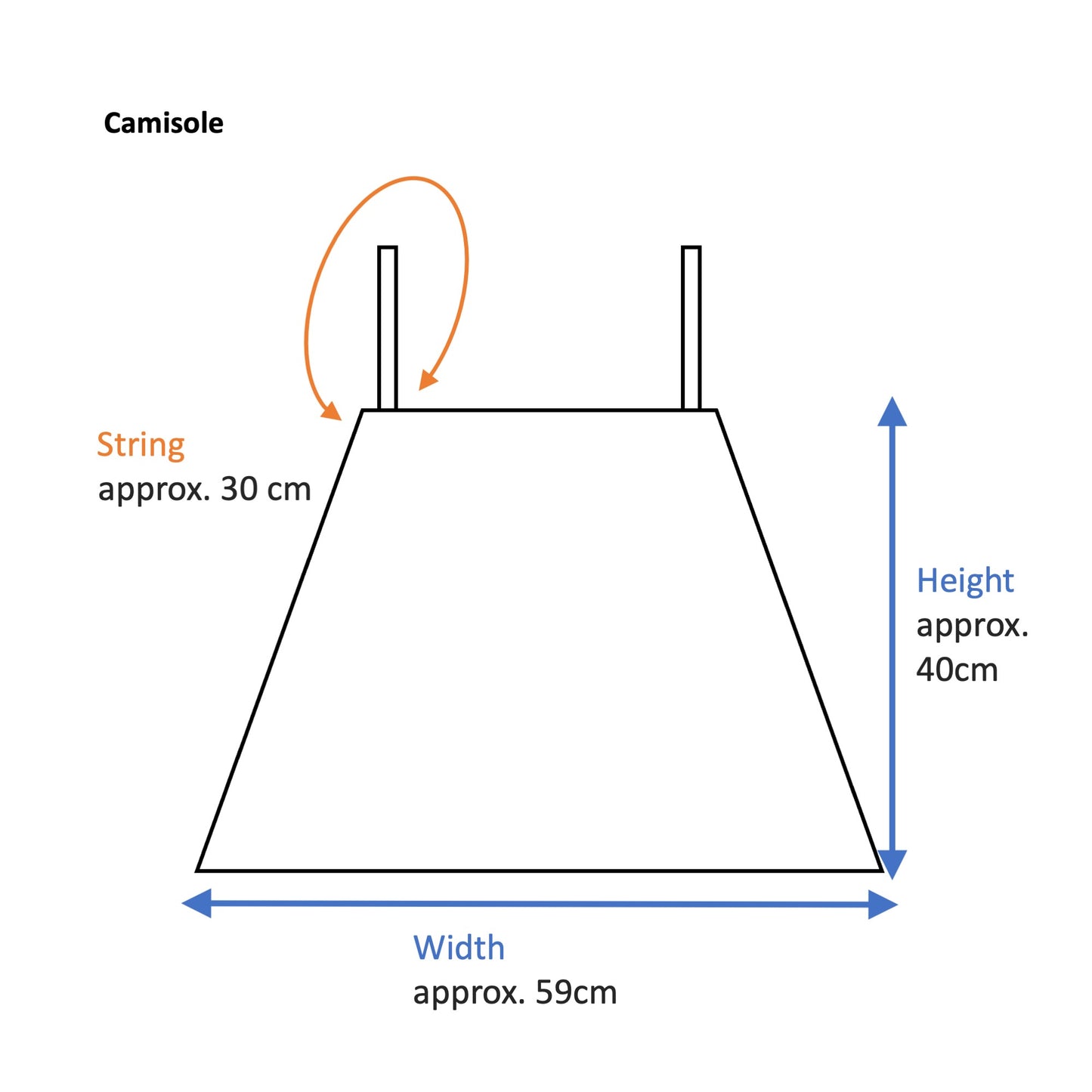
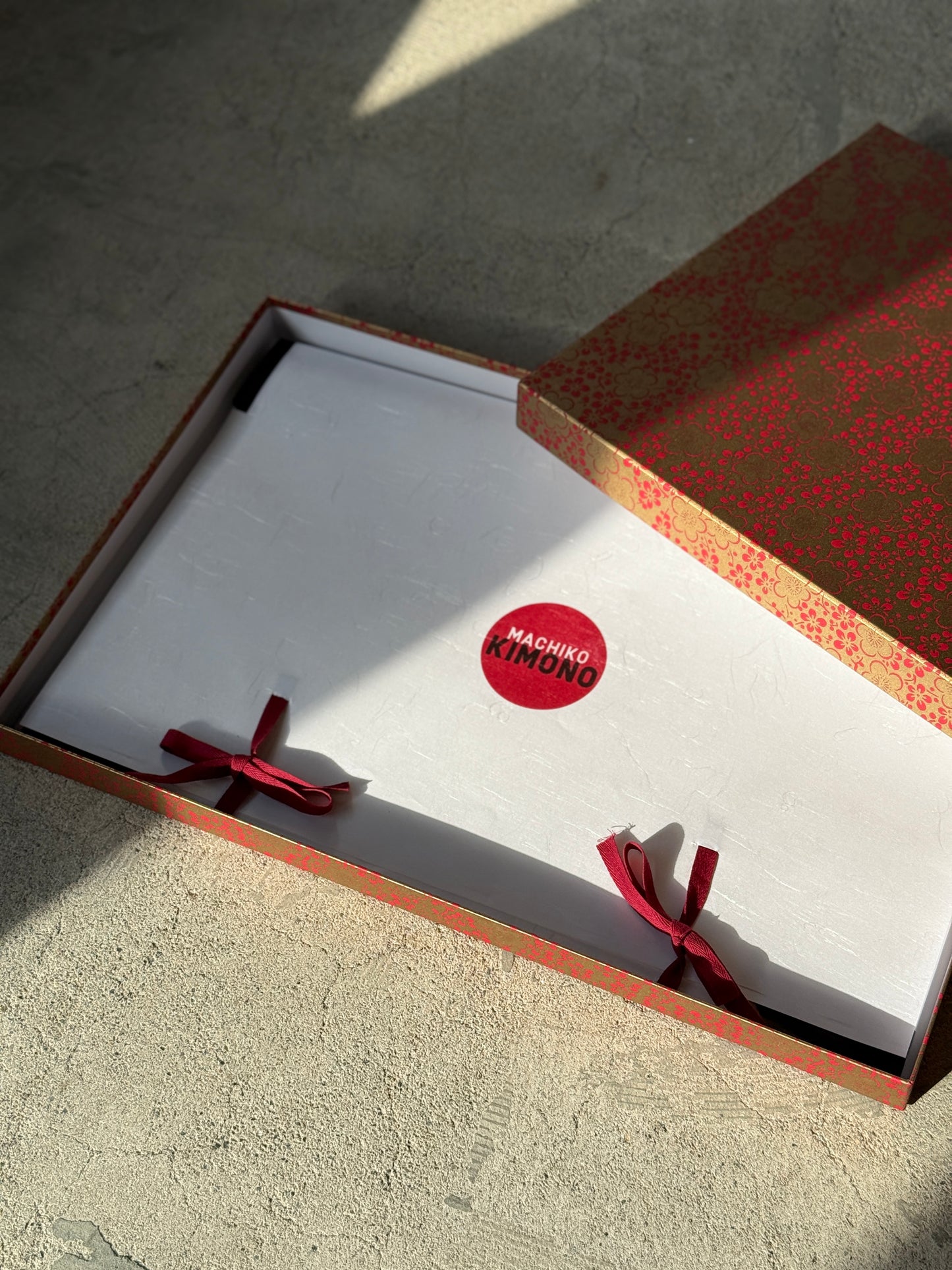
Let customers speak for us
from 52 reviewsLos calcetines de Machiko son verdaderas obras de arte. Gracias!

Hice un pedido a Machiko, porque me gusta mucho todo lo relacionado con Japón. Me llegó mi HAORI y es una verdadera belleza, único!!!. El packaging exquisito, elegante, muy, muy cuidado.
Machiko es una gran profesional y en todo momento estuvo pendiente de solucionar mis dudas.
Tiene verdaderas obras de arte.
Gracias!!

I am absolutely thrilled with my recent purchase of the genuine vintage Japanese kimono (Tsumugi HAORI) and the Kimono elastic waist pants, which I bought as a birthday gift for my teenager son.
The craftsmanship is exceptional, reflecting the meticulous handwork of skilled Japanese artisans. The haori, crafted from luxurious "Oshima Tsumugi" silk, exudes elegance and versatility with its unisex oversize style, making it a standout addition to any wardrobe.
I appreciate the attention to detail, from the careful handpicking of this vintage gem to its professional cleaning service before shipment.
The kimono's condition is remarkable, and the free-size fitting ensures it accommodates various body types comfortably. The accompanying elastic waist pants are a wonderful touch, upcycled with precision to retain the kimono's inherent beauty while offering a modern, casual feel. The vintage characteristics add to the charm of this outfit.
The packaging in the Special Machiko Kimono Box, complete with a free haori-himo, adds an exquisite touch of traditional presentation.
Overall, this ensemble delivers a perfect blend of heritage and contemporary style. I highly recommend this one-of-a-kind, upcycled collection to anyone seeking unique fashion! I am very happy with this outfit, that my son will be able to enjoy wearing for many years!

Amazing kimono
Perfect condition , beautifully packed .
Thank you 🙏

ありがとう ございました
I’m happy with my purchase and everything went so well. The haori was beautifully packed.
Greetings from Finland 💙

Ukijo-e socks are really beautiful. I love them

I’m delighted with the vintage black haori. It’s really beautiful and good condition . The packaging is very neat and complete for storage

Everything is impecable, thank you so much for every detail in the packaging and the care and love the haori was treated until its final destination. I'm very fond of this piece.

I've been following dear Machiko on instagram and I had the pleasure to purchase from her amazing store. I have to say she's truly an artist . It's truly authentic and has the smell of the endless love , Japan . I admire how Machiko cared for every little detail, which truly reflects her passion for fashion.
Thank you, Machiko san.

Machiko Kimono surpassed all expectations with this kimono, which was pressed and folded with absolute precision and perfection. The packaging was elegant and put together with so much care - a rarified treat in these days of fast, disposable purchases. I will order from Machiko Kimono again as this first purchase was absolutely amazing. I should also add that I made a mistake regarding shipping and Machiko-sama handled the error with such grace - I can vouch not only for her quality product, but her excellent service even when I made a very, very careless error, which I was rather embarrassed about because it caused a lot of inconvenience. Thank you for this unique experience. With my gratitude, Wendy

The haori was in great shape, clean, properly folded. Its box was not damaged. The helpfulness of the reaction time of the vendor was over my expectation. Perfect communication in english.
10/10 would recommend.

Love the color and the craftsmanship and the fact it was cleaned by a professional kimono cleaner. The package came with a lovely note and a stamp of quality control! Great customer service as well.

Amazing customer service, quick shipping, and it arrived absolutely in great condition! If anyone is looking to source quality vintage kimonos or have someone upcycle the gorgeous fabrics, I would 100% recommend Machiko!

So, my first kimono. Machiko sama helped me choose the perfect one according the my climate and purposes. I was going to wear it while travelling (at the airport and train stations), but when I received the package, I realized it would be a waste because kimono is so trendy. It made a splash at work. All the girls wanted to take pictures with me and the guys were jealous :):):).

I recently purchased a traditional Japanese silk kimono, and it’s simply delightful! The silhouette of the kimono is incredibly graceful, with the fabric beautifully accentuating the figure and flowing softly with every movement. The silk has a very pleasant texture, feeling like a gentle touch on the skin. I wore the kimono to a music concert, and it was amazingly comfortable to move and dance in. The flowing shape of the sleeves added a special elegance to every gesture, creating an effect of lightness and smoothness. It was just perfect—not too hot, not too cold—so I could fully enjoy the evening event in complete comfort. I’m very happy with this purchase!🫶🏻🌸💗






























